As agave farming catches on in California, UC ANR experts offer environmental and cultural considerations
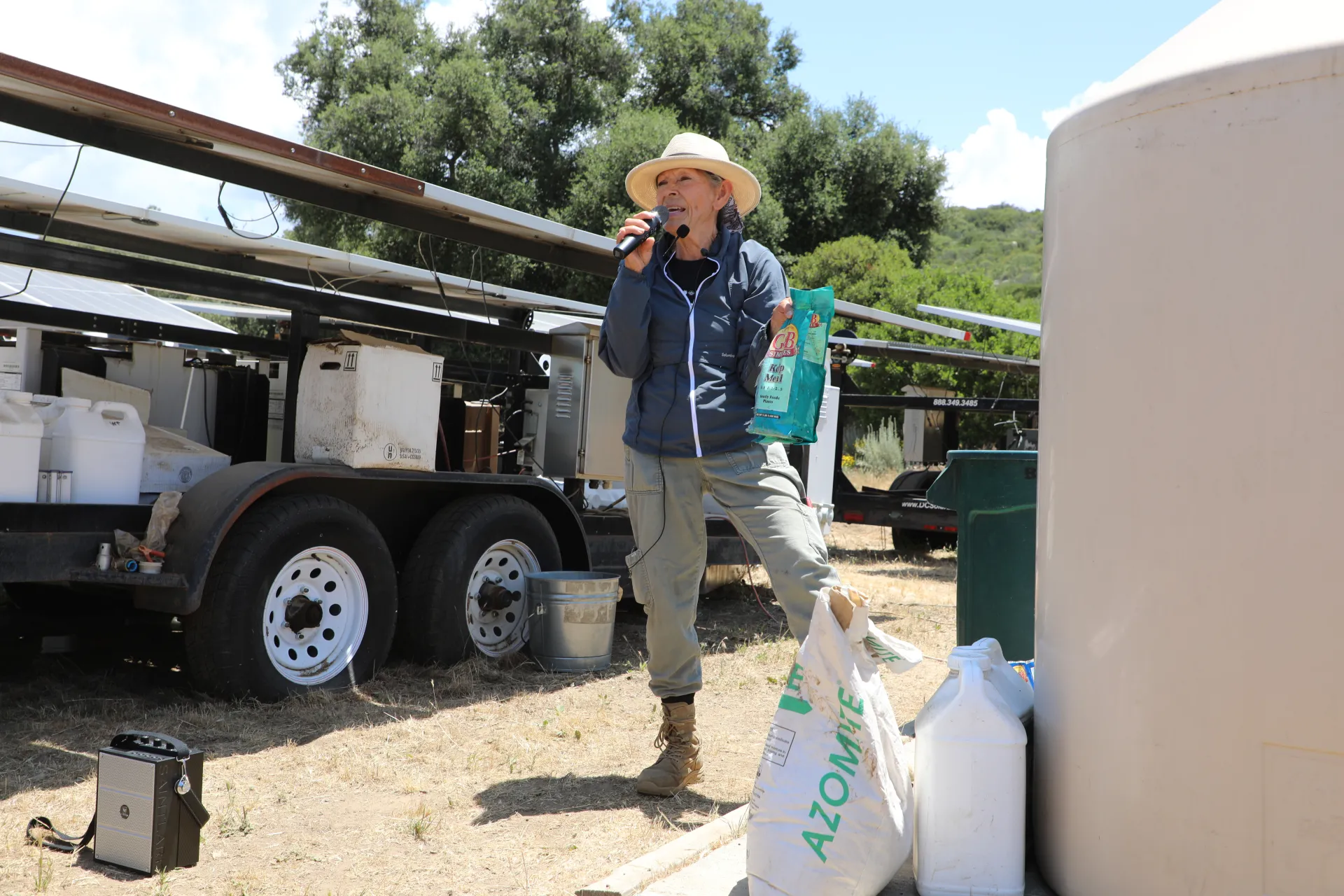
We’re living in a modern gold rush. That's according to Samuel Sandoval Solis, a University of California Cooperative Extension specialist and UC Davis professor in the Department of Land, Air and Water Resources. But don’t get your pickaxe yet, he’s not talking about minerals. He’s interested in the latest must-have crop.
“We have gone through the pistachio rush, the avocado rush, the almond rush. There is always a rush,” said Sandoval Solis. “We are now in the agave rush.”
The popularity of farming agave has taken off in the last few years, with climate change motivating growers to consider planting drought-tolerant crops. Before 2023, only 50 acres of agave were grown statewide, according to a UC Davis study. Now, that’s quadrupled to more than 200 acres.
With all that buzz, the UC Organic Agriculture Institute hosted a field day on June 4 for current and prospective growers at an organic agave farm in Campo, part of San Diego County. Through a series of bilingual lectures and site tours, experts from the University of California Agriculture and Natural Resources shared farming techniques that respect the environment and the cultural significance of the agave plant.
Sandoval Solis, a water resources expert, delivered his talk in Spanish, retelling a Mexican creation story featuring agave. He hoped to inspire growers to reflect on the historic significance of the plant, which has been cultivated and studied in Mexico for thousands of years. With that background, he presented attendees with a choice for how they approach growing the plant.
“We are at a crossroads,” Sandoval Solis said. “We can expand the conventional, environmentally aggressive practices, or we can be a little bit more gentle and socially responsible.”
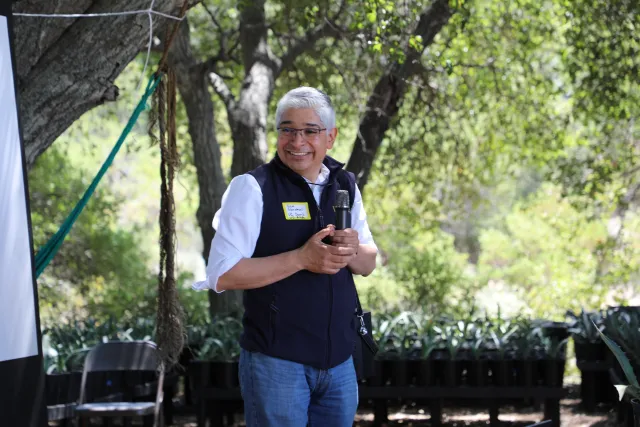
Spilling the compost tea
Ofelia Lichtenheld demonstrated those gentle, regenerative practices on her farm, Rancho de los Espíritus Contentos, where the event was held. She invited attendees to join the process of brewing a “compost tea.”
The murky cocktail is a mixture of organic nutrients including kelp, molasses, bat guano and vermicompost (aka, worm poop), which will be used to water the various test plots of agave growing on the property. Each agave species is evaluated for its suitability to the local microclimate, and Lichtenheld hopes to set every plant up for success by holistically investing in the farm.
“Chemical fertilizers feed the plants, not the soil. I am very concerned about getting the diverse microbiome in the soil,” Lichtenheld said. “You can tell in the plants – they are very happy.”
Reduction in pesticides and herbicides presents some inconveniences, however. Squirrels and rabbits nibble on Lichtenheld’s plants, drawn to their natural sweetness. Coyotes have damaged her irrigation system by chewing through the plastic tubing.
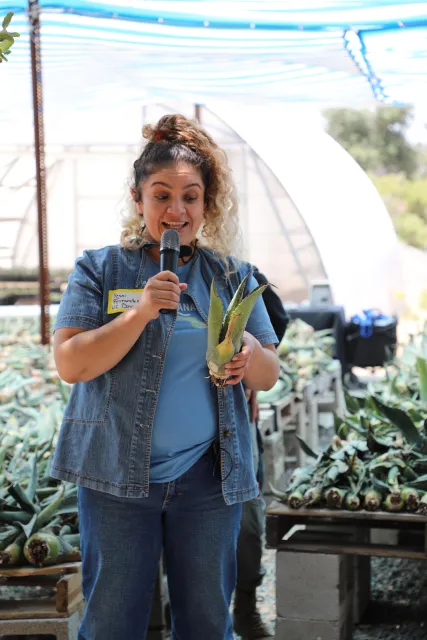
“I have a lot of challenges. That’s why I wanted to have all these people here so they can learn,” Lichtenheld said.
The farm is experimenting with solutions like enclosing the agave with gopher baskets. Meanwhile, Lichtenheld is installing even more wildlife habitat on her site with help from Point Blue Conservation Science.
She’s confident the long-term benefits of pollinators and other wild visitors will outweigh the frustration during this research and development phase. That’s why she appreciates the guidance shared by UC ANR advisors. She’s also sharing her findings as part of the organic hub of the California Farm Demonstration Network, which supports the exchange of sustainable knowledge and practices between demonstration sites.
“ A farmer should not be farming alone,” Lichtenheld said. “They should be farming with other farmers.”
To that point, agricultural experts from UC ANR and UC Davis are conducting a survey for agave farmers to share their experience growing the crop. The survey is available in English and Spanish. The results will be used to create an agenda for applied research, educational training and manuals of strategies that address current challenges.
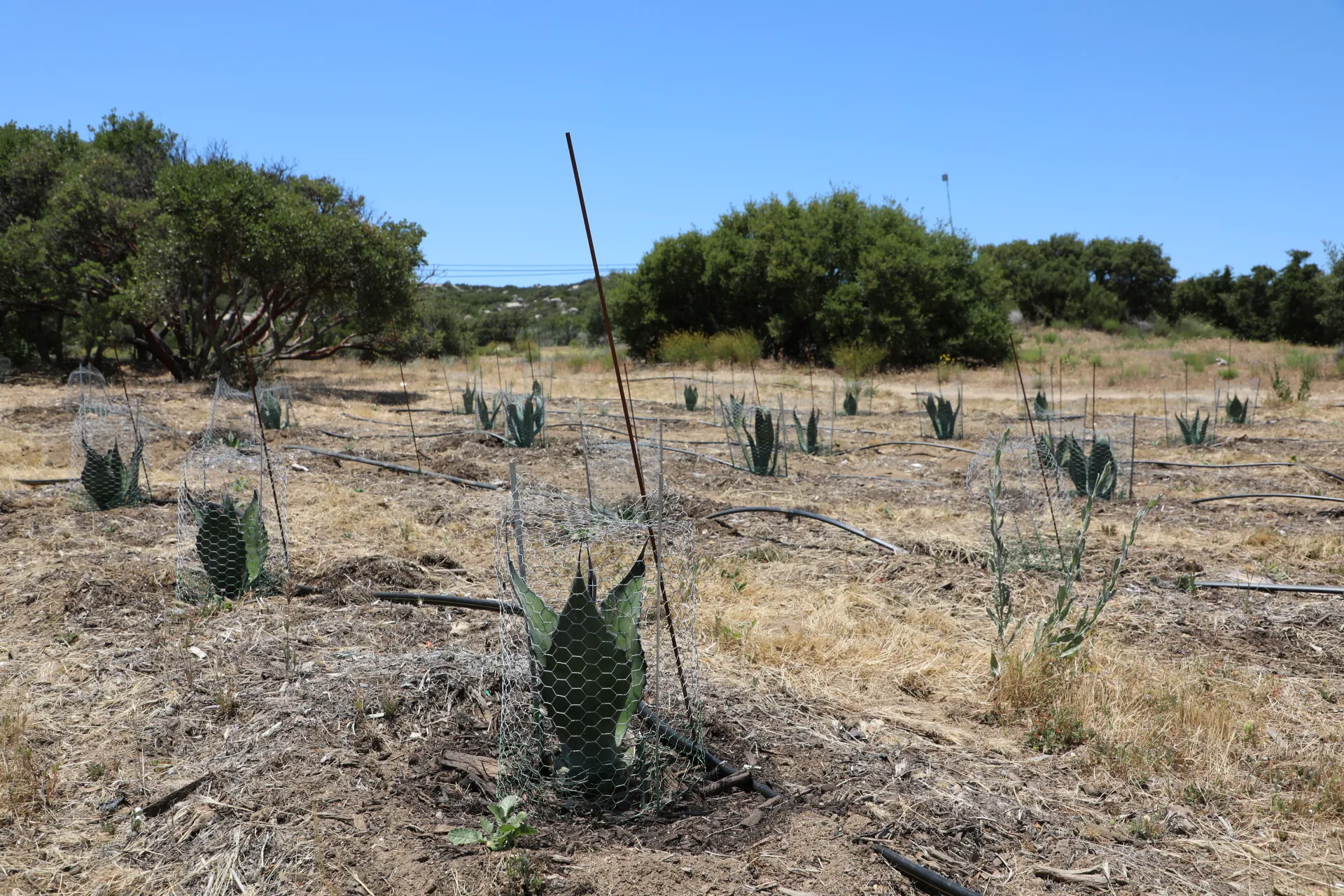
Investing in long-term growth
Technically, field day attendee Christopher Konrad has been an agave grower for over a decade. His uncle introduced him to the plant as a water-saving ornamental in his garden.
“They’re easy to propagate,” Konrad said. “He would hand them off to me. I would start growing them and enjoy them in my yard.”
Now, Konrad is thinking about the plant differently – turning the corner from home gardener to entrepreneurial agave grower. He’s watched the crop gain a foothold in California, marked by the establishment of the California Agave Council, a trade group dedicated to the plant.
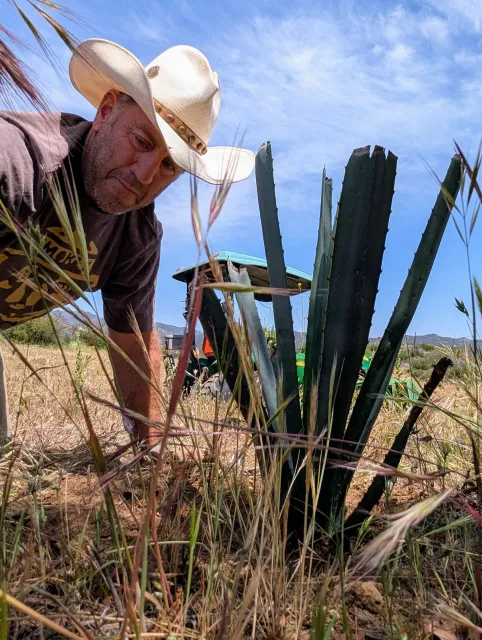
Soon enough, he may have his first harvest to show for it.
“I’m going 2032,” Konrad said. “It sounds like a nice number to me.”

